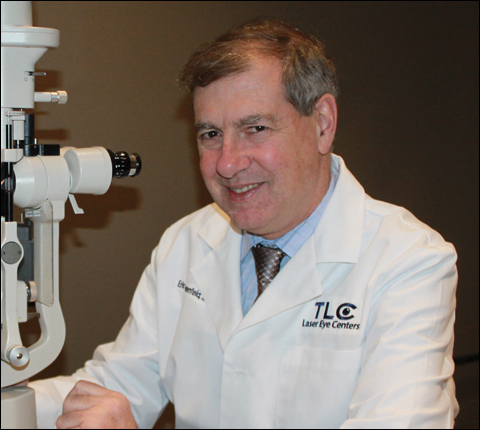PUBLICATION EXCLUSIVE: Panelists illustrate strides in dry eye diagnosis and management at OSN New York’s 25th anniversary meeting
Click Here to Manage Email Alerts
Dry eye disease is an area that 10 years ago was largely ignored. Now it is one of the most explosive areas in ophthalmology, according to Eric D. Donnenfeld, MD.
In this issue of Ocular Surgery News, Donnenfeld leads a panel of experts convened for the annual Cornea Health Round Table at the silver anniversary of OSN New York to discuss the latest developments in diagnosis and management of dry eye and ocular allergy.
Eric D. Donnenfeld, MD: Here is a classic patient presentation: A 74-year-old woman has cataract surgery with a multifocal IOL in the right eye. Her vision is 20/25. The patient says, “It’s a waste of money. The lens doesn’t work. I can’t drive at night. I really don’t read. I’m very unhappy with the loss of quality of vision.”
How would you manage this patient? Would you do an IOL exchange, implant a multifocal IOL in the left eye, do ocular surface disease testing, or do a limbal relaxing incision if needed? What would be the first thing you would do for this patient?

Image: Donnenfeld ED
Elizabeth Yeu, MD: Look at the cornea and assess how the visual axis aligns with the center of the cornea and what the actual higher-order aberrations are. Ocular surface disease testing is one of the most common causes, and diagnostics are key to managing this. Also, determine what residual refractive astigmatism or refractive error actually exists and then, of course, do the macular testing.
Donnenfeld: I do a lot of presbyopic IOLs in my practice, and when an unhappy patient comes in, I want to find out why the patient is unhappy before I see him or her. I want testing done. I want a topography. I want a tear osmolarity. I want MMP-9. I want to have an OCT of the macula done. So, when I first see that patient who is unhappy after surgery, I can say, “Mrs. Jones, I just looked at some of your results. You have very dry eyes, and you should be very unhappy with your results of surgery.” I am on their side right from the beginning, and I talk to them about how we are going to solve this problem together because once the patient-doctor interface is broken, it is very hard to repair. In this case, I agree, ocular surface testing would be the first thing I would do.
And this is kind of my bumper sticker: If you discuss a problem preoperatively, it is an expectation. If you tell them the same thing postoperatively, it is a complication. So, always tell the patient about risk factors before the surgery.
Kenneth R. Kenyon, MD: I concur, but apart from leading from the front, it is particularly important in these patients who are at risk for ocular surface disease problems that you see that patient first at the slit lamp in a virgin ocular surface setting because the testing, particularly if it involves even a drop of topical anesthetic or just a drop of non-anesthetic fluorescein, induces all manner of artifact that make it impossible to make the definitive assessment.
Donnenfeld: What we do is, before I see the patient and before any drops go in the eye, we get a topography and do objective testing, such as osmolarity and MMP-9. That way, I am already considering those results when I see the patient. This patient had high osmolarity, positive MMP-9, mild corneal staining, short tear breakup time and clogged meibomian glands — obvious dry eye.
- Click here to read the full publication exclusive, Cover Story, published in Ocular Surgery News U.S. Edition, December 25, 2016.
